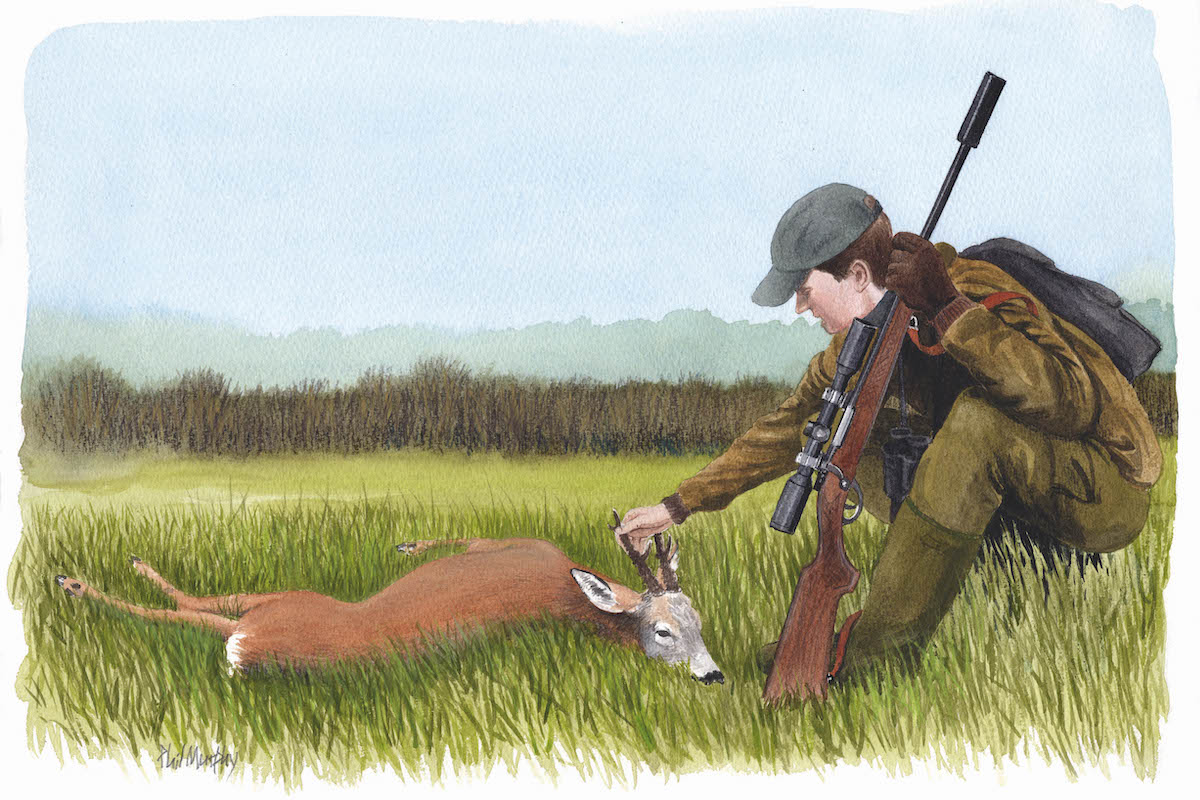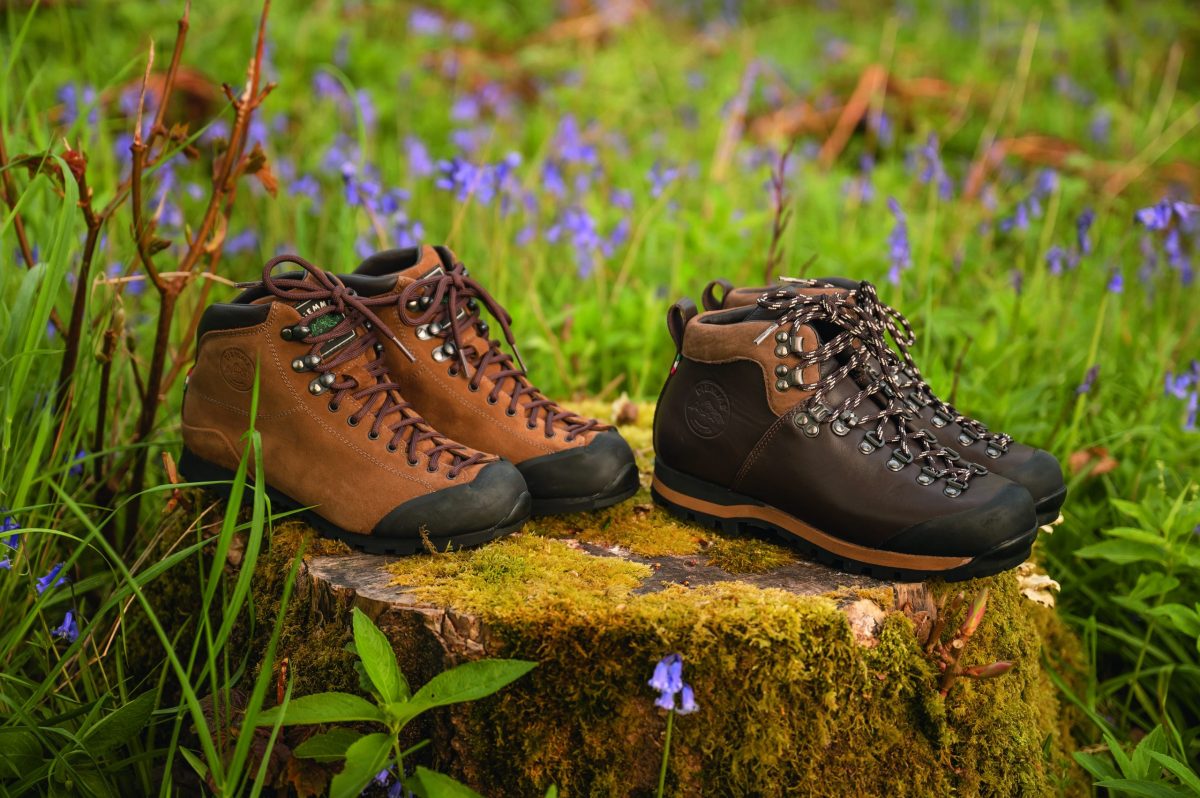First-class glass
Despite the rise of thermal spotters, traditional glass scopes most certainly still have a place in a digital world – and they needn’t cost the earth, says Chris Dalton

I will always remember the advice I was given when I first started stalking: “Never compromise on your optics.” Naturally, as a younger man, I spent all my money on my first rifle and opted instead for a budget scope. I soon learned the folly of my choice, and since that time, I have always ensured my rig is topped with quality glass.
That was many, many years ago of course, and the technical development that now goes into most riflescopes has come so far. The options are vast.
I am lucky enough to handle and peer through a lot of scopes in the field, either viewing a client’s set-up or taking products for review, and I stand by my view that the quality of a scope cannot be compromised. Since my early lesson, I have used Swarovski optics – currently a Z6i 2-12×56 – which really take some beating. This one retails for around £2,200 but the clarity of the lenses, efficiency in low light and after-sales warranty is second to none.
However, my curiosity was aroused after being told that the quality of budget scopes has improved dramatically in the past 25 years. I wanted to investigate this claim and compare a few options with the classic glass that I have become accustomed to.
I got my hands on a range of optics from Hawke, GPO, Vortex and Steiner and set to work, testing each of them on the range in low and poor light conditions. I admit I was surprised by the overall performance of each one, especially the Hawke, GPO and Vortex, which all retail for well under £1,000.
Each one exceeded my expectations, and I had no issues with the build quality of any. But I needed to pick a favourite for a stalk the following morning so, based primarily on its superior lightgathering qualities in low light, I opted for the Steiner Ranger 8. At £1,600, this scope sits nicely between some of the more entry-level optics and my own Swarovski, so it ought to deliver.
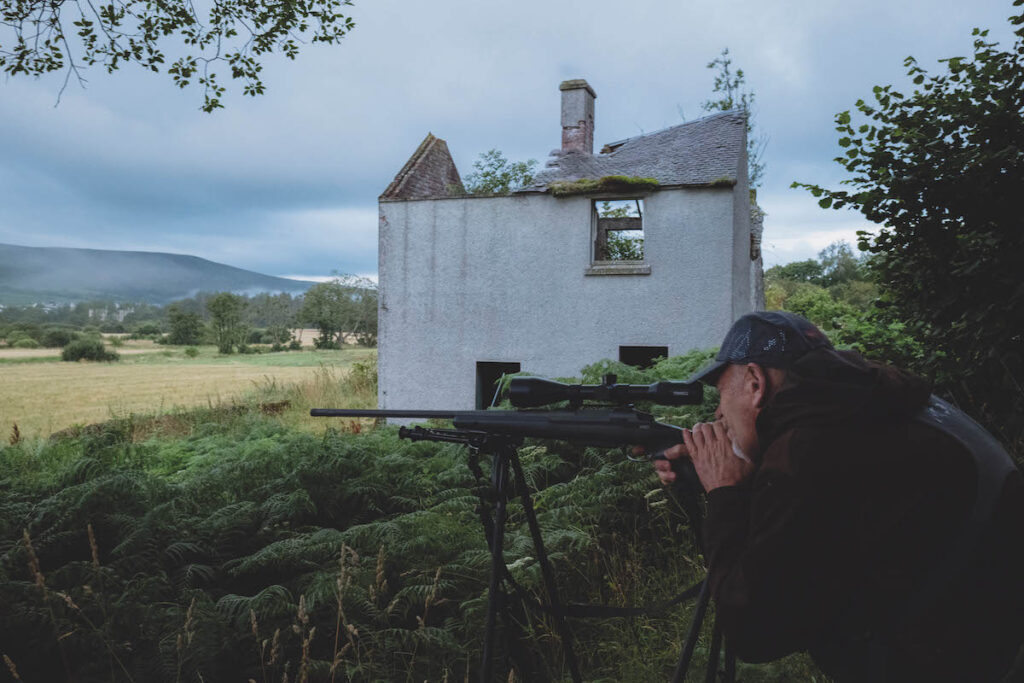
With the Steiner Ranger mounted on his new
Sako S20, Chris tries out the scope in the gloomy
half-light
I mounted the Ranger on my new Sako S20, a completely new rig for me. Unfortunately, my new moderator had not arrived, and so I was out for the first time in many years with an unmoderated rifle. I felt almost naked. We are now in the peak of the roe rut, and so I headed out with a fair bit of optimism that I could elicit a response from at least one testosterone-fuelled buck.
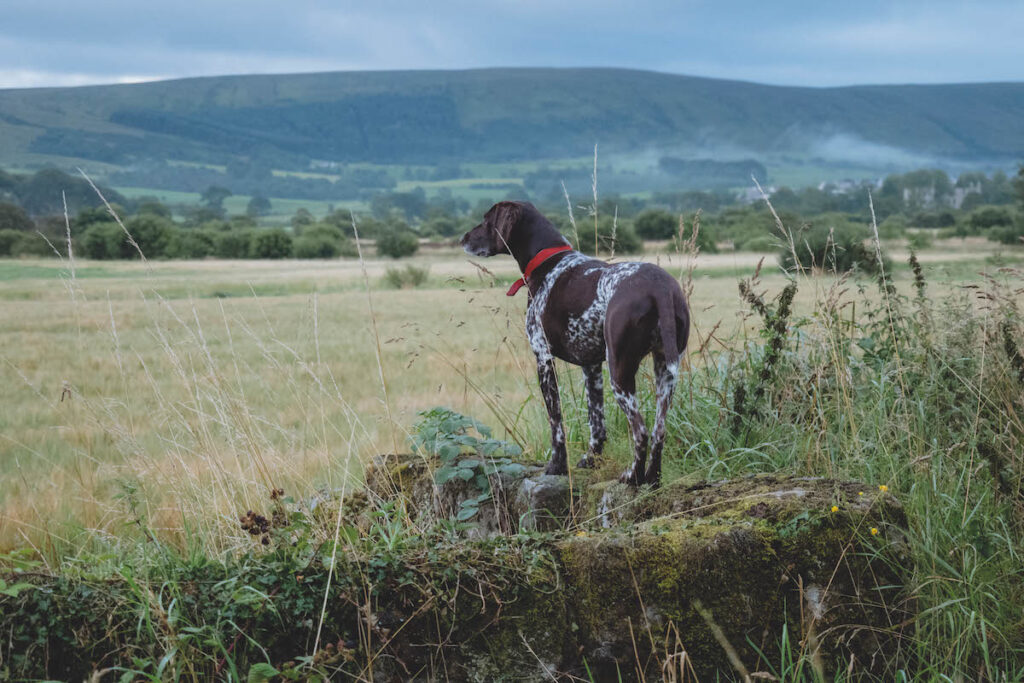
Zosia remains alert for deer
I pulled up at the gate to a private estate close to home. It was still only just light. You can call bucks at any time of the day in the rut and going out later in the day is a good tactic. In fact, if deer have been rutting hard during the night, which they often do, then at dawn they can be difficult to tempt with a call.
Unfortunately, the luxury of a late start was not an option; this is a popular spot with early morning dog walkers. It was, however, a lovely morning, surprisingly cool for August. I had not gone far before I spotted a few roe browsing around the grounds. Entering via my access point allowed me a view over fields and across to the river that bounds my permission.
It was still quite dark under the tree line. I checked through the scope, just to make sure that I could see clearly in the gloomy half-light. When you look through the glass of a traditional topend scope, you can see the difference in quality, particularly so in low light. As deer species are generally most active at dawn and dusk, having the ability to see them clearly in semidarkness provides stalkers with a huge advantage.
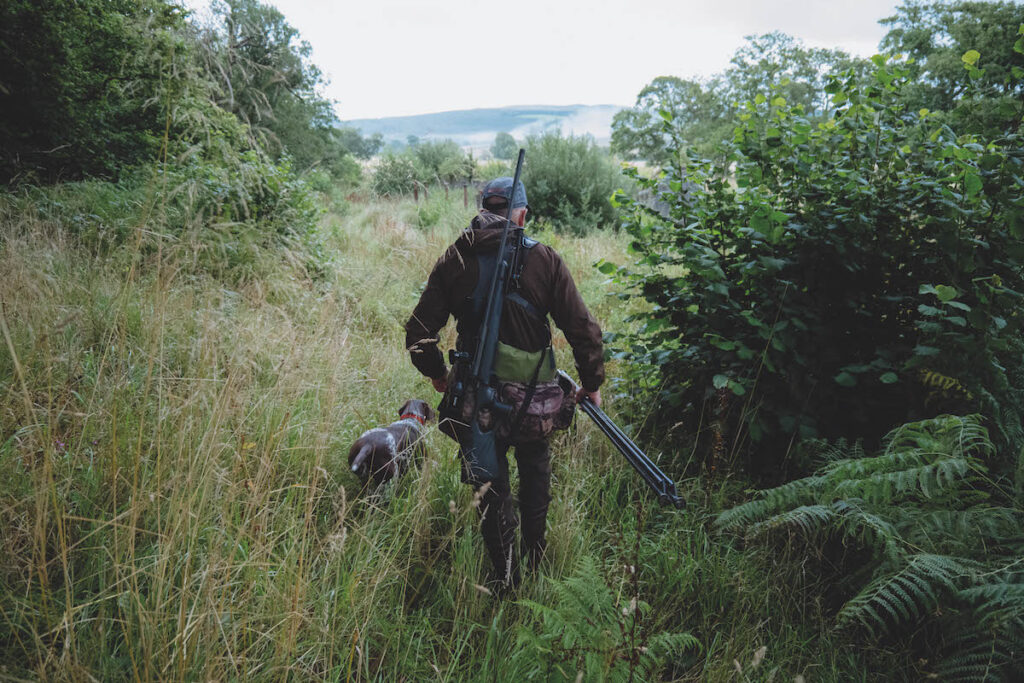
Chris and Zosia move silently through the
permission, pausing to call for roebucks
The widespread use of thermal spotting scopes now affords stalkers the ability to locate deer in darkness, and so often we are heading out on to the ground much earlier than we would have done previously. This is all well and good but, having located a deer, it is imperative that before pulling the trigger the stalker has fully and positively identified and sexed the deer before taking a shot. This is where the light-gathering capability of a quality lens really does come into its own.
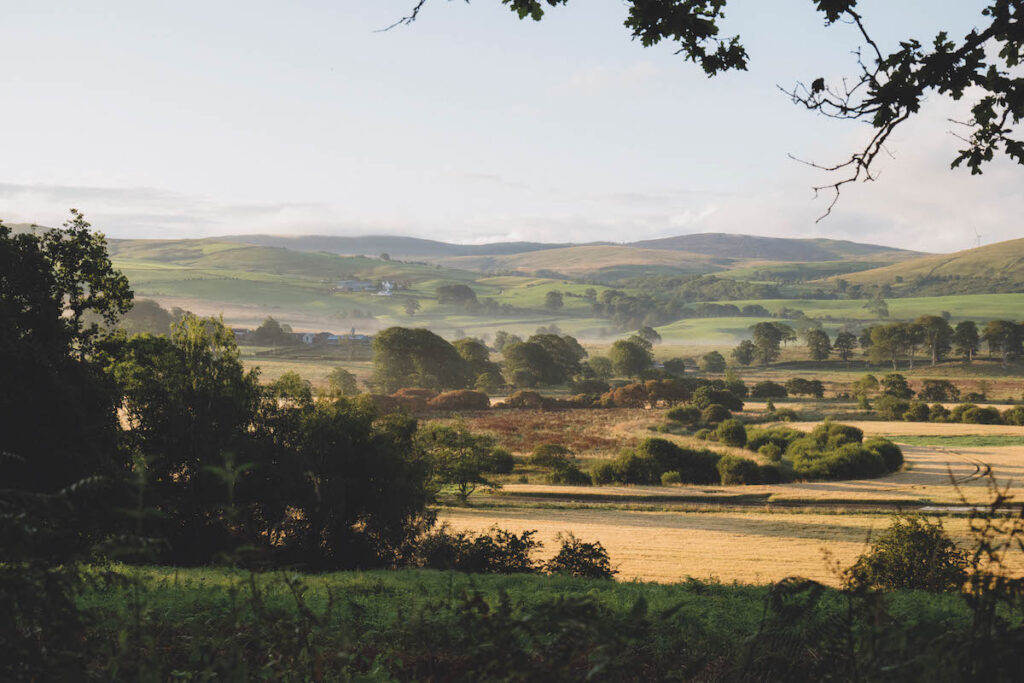
It’s a beautiful, fresh August morning
Positive identification
A closer check revealed all the deer were does and all had followers. Breeding has been good this year and the kids are well on. The fact that all the does had their kids with them, and there were no signs of any mad chasing bucks around the standing crops and willows, did not bode well. I progressed a little further to a spot where I had a good view of the area around me. I stood next to a large beech tree and started to call, quietly at first and then progressed through a range of calls, using the Buttolo before changing to the Nordic Roe call.
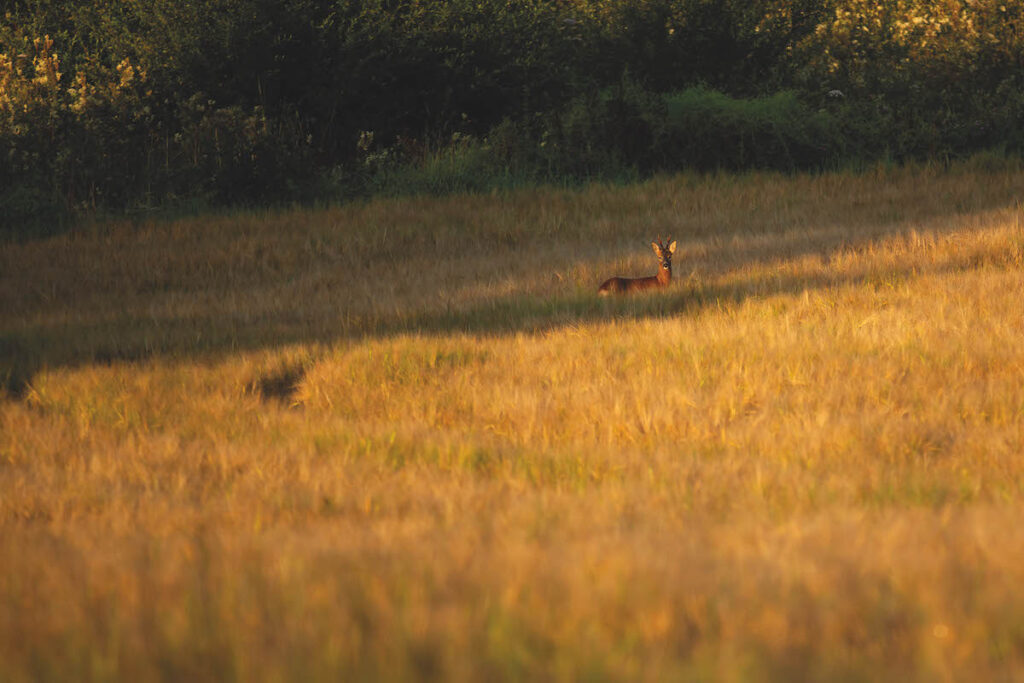
It’s not long until Chris spots a roe
Face to face
After around 20 minutes with no response, I moved and repeated the process with the same lack of action. At my third stand, the instant I switched to the Nordic Roe, a buck appeared in some scrub and thistles around 300 yards away. I gave another gentle ‘peep’ and he set off, charging straight at me. He burst on to the track, bounding up before stopping a few feet from my German shorthaired pointer, Zosia. Dog and buck stared intently at each other before the buck sidestepped nimbly off the track and into the neighbouring barley field.
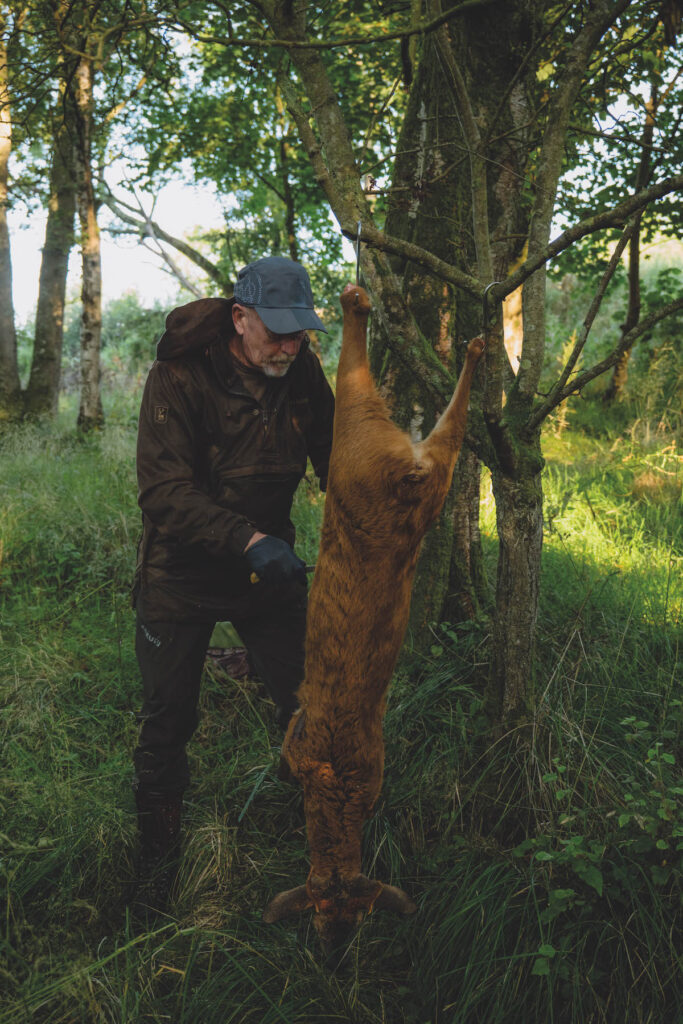
Chris gets to work gralloching the buck after dropping it where it stood
After a few paces, the buck turned broadside. That was his undoing. He dropped with the briefest of flickers where he stood. I have called roebucks for years but the thrill of a buck responding to a call is not dulled. Seeing the hound and buck face to face, just feet from one another, is an image that will stay with me forever.
And what of the four scopes on test? I was genuinely impressed by all of them but the importance of quality lenses when stalking cannot be overstated. This field test has demonstrated that a goodquality ‘budget’ scope will also work effectively in low light. You may have a pack up a little earlier as the light fades, but so what?
In the know
The GPO, Hawke and Vortex scopes were supplied by Talon Gear. The guys running Talon Gear are stalkers and so are well placed to give advice if you have any questions about optics.


